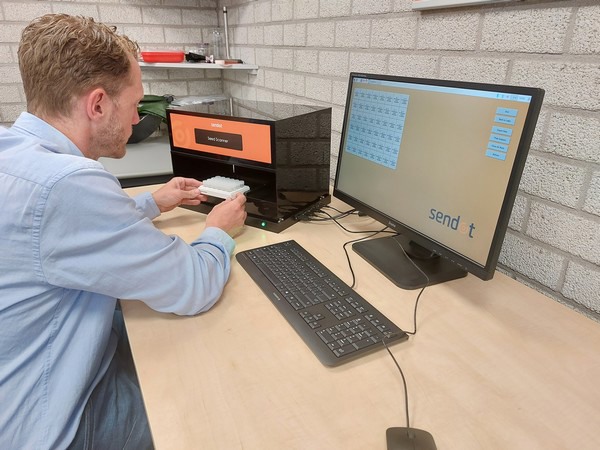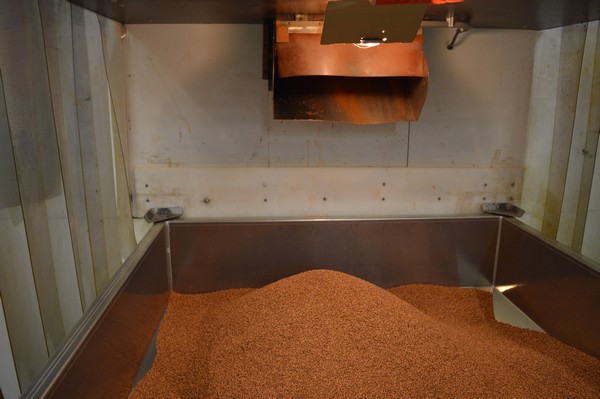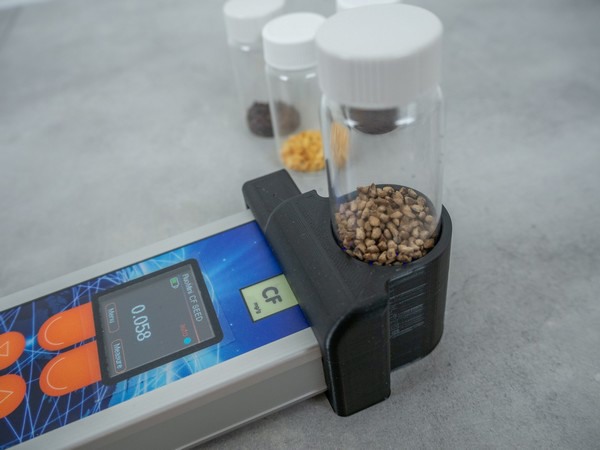Instead of waiting several weeks, get insight into the germination capacity of seeds within a few days, and also save on labor. With their new seed scanner, Sendot has a great piece of automation to offer to breeding companies but also to plant breeders and growers who want to know what kind of seeds they have.
On Wednesday, May 24, the first installation was delivered to a Dutch plant grower. At the sensor manufacturer's headquarters in Houten, they expect this to be the go-ahead for many more installations made possible by serial production.

For the entire chain
Measuring germination capacity is not new. What is new is that Sendot has developed a scanner that is compact and, therefore, easy to use. Rather than a huge cabinet, it is a robot that can be carried around from greenhouse to greenhouse. "We assume that once companies get used to our technology, they will quickly purchase several scanners," says Bert van Tol and Arie Draaijer, CEO and CTO of Sendot.
"Indeed, what we want to achieve is to enable quality assurance throughout the chain," adds Commercial Manager Erwin Gräfe. Making sensors available to the entire chain, not just to science and laboratories, is what the company stands for. "That is why our products have to be low-threshold and easy to use."
Germination capacity tracking
Sendot provides a robot, but not insignificantly, also software, which can be used to easily and conveniently read out data and analyze it in graphs. Bert shows an example graph examining the germination of tomato seeds. This germination capacity is determined by the oxygen consumption of the seed in the first phase of germination.
In the graph, you can see this in different colored lines, one color per seed. Not much happens in the first few hours. The seed first gets wet from the liquid it is in. The line starts at 21%, the percentage of oxygen in the air. Once wet, germination begins. Then the seed also starts using oxygen. Sendot can measure that. They do so using a special, self-developed (literally baked) coating at the top of the tube.

Erwin demonstrates how it works
Measuring quality quickly
There is variation in how individual seeds germinate. Seed suppliers do their best to deliver seeds with as even germination as possible. Moreover, they promise a percentage of emergence on delivery. However, it can happen that seeds, for example, if they are already older, have less germination. A little test with the seed scanner can reveal this.
Why is this useful? For example, when sowing at a plant breeder, to sow enough, you have to take into account the percentage of seeds that do not emerge. There is nothing more annoying than finding out after, say, two weeks of germination that some of the seeds do not germinate. Anyone who then has to sow an extra batch will fall behind schedule.
Seed treatment
The scanner can also be very useful when evaluating seed treatment. Arie: "The landscape of chemical use is changing rapidly, less and less is allowed, and the use of organic alternatives is still in its infancy. With the seed scanner, rapid and automated evaluation is possible. This means fewer standard germination tests are necessary."

Coated seed at a breeding company
Prototype
Anyone thinking, hey, I've seen that scanner before, may be right. A prototype is already in use at a Dutch grower. Meanwhile, Sendot is ready to start serial production. A 3D printer is running in Houten.
Those not yet familiar with the seed scanner may already be familiar with Sendot's various other sensors. "Our photosynthesis sensor is going very fast at the moment," Erwin points out. "But we also have, for example, an oxygen sensor, which measures temperature and oxygen in the root environment." Here, a similar coating was used to that in the seed scanner for germination, but the coating was deployed in a different way on the tip of the mobile sensor.
Easier than with human eye
Other derivatives besides germination can be extracted from the curves of the graphs made with the data from the seed scanner, which can be seen on the screen that the user connects to the seed scanner with a connector, Bert explains. For example, one line in the example can be seen to drop faster than others or much earlier than other lines. Those seeds start germinating later. If the line drops fast, then the seed is very germinative. "Things like this are difficult to measure in manual germination analysis," the CEO points out. "It can be done, by measuring leaf area, but that is quite tricky, especially with all those small leaves."
Moreover, the robot can do it quickly. The robot can process one plate, or actually a rack, of tubes per minute. How many seeds are in there varies. The robot can handle 48, meaning 48 tubes, or 96 at a time. "These are numbers that suit current practice," Bert points out. If the seeds are very large, less is also possible. Twenty-four tubes, for example. In time, Sendot is also looking at robotics for changing the plates.

Sendot also already has a mobile sensor available that measures chlorophyll to measure seed quality. Together with the seed scanner, users can get even more data on seed quality themselves.
For more information:
Sendot 
info@sendot.nl
www.sendot.nl
